Abstract
1. The observation that human red blood cells do not shrink in hypertonic media as much as expected for ideal osmometers has previously been explained in terms of either a marked increase in the osmotic coefficient of the cell contents or an increase in the chloride content of the cells.
2. Changes in suspension pH and haematocrit have been observed when the concentration of the unbuffered NaCl medium was doubled. The small increases in external pH, and the size of the volume decreases, are inconsistent with variations in the Cl content as a significant factor in the non-ideal osmotic responses.
3. Membrane potentials of red cells in buffered media were followed using the fluorescent dye, diS-C3-(5). On shrinking at pH 7·4, the cells hyperpolarized ca. 5 mV as predicted if changes in the osmotic coefficient rather than in Cl content explained the osmotic behaviour.
4. Regarding haemoglobin in concentrated solution as a solute with high osmotic coefficient is formally correct but is little help in understanding the properties of the solution. We have found it useful to consider separately haemoglobin and the rest of the contents of the cell. The haemoglobin then supports part of the total hydrostatic pressure on the cell leaving the crystalloid solution to experience a reduced fluid pressure. In greatly shrunken cells the contents act like a gel with the matrix of haemoglobin under compression and the fluid which fills the spaces within the matrix under tension.
Full text
PDF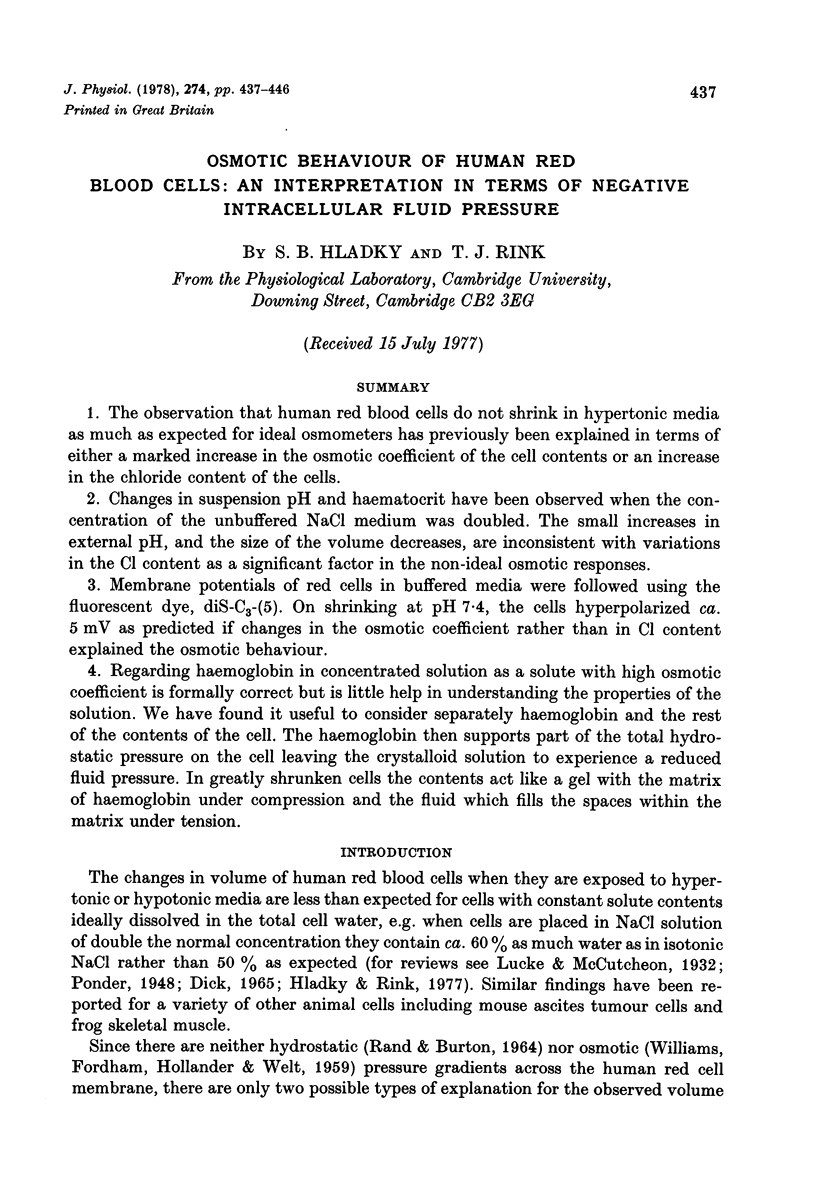
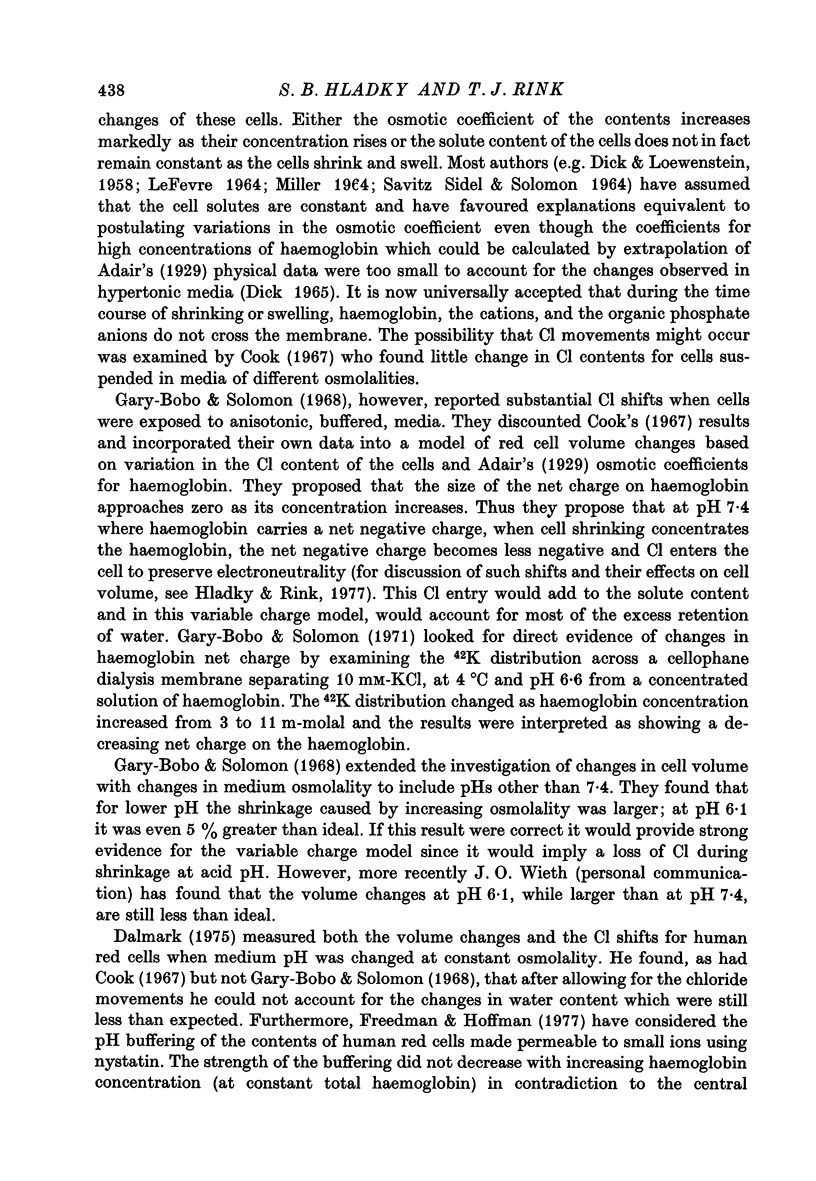
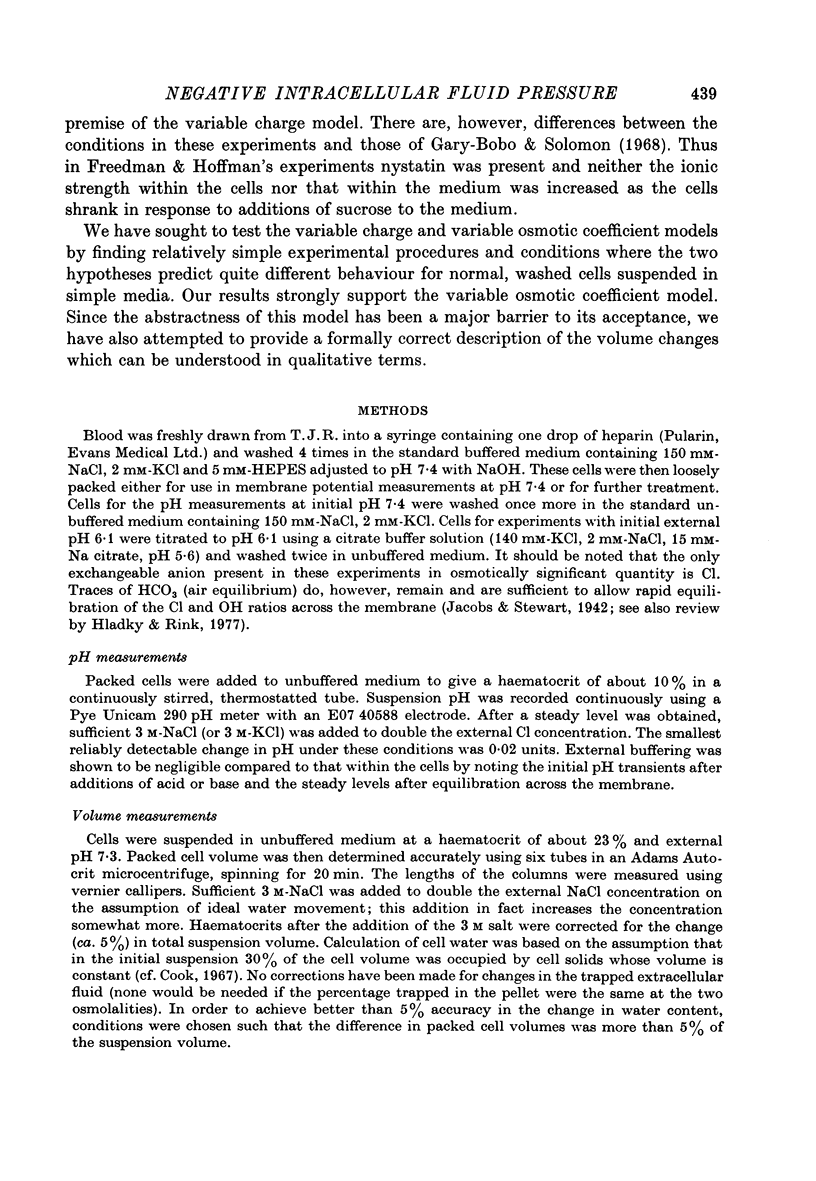
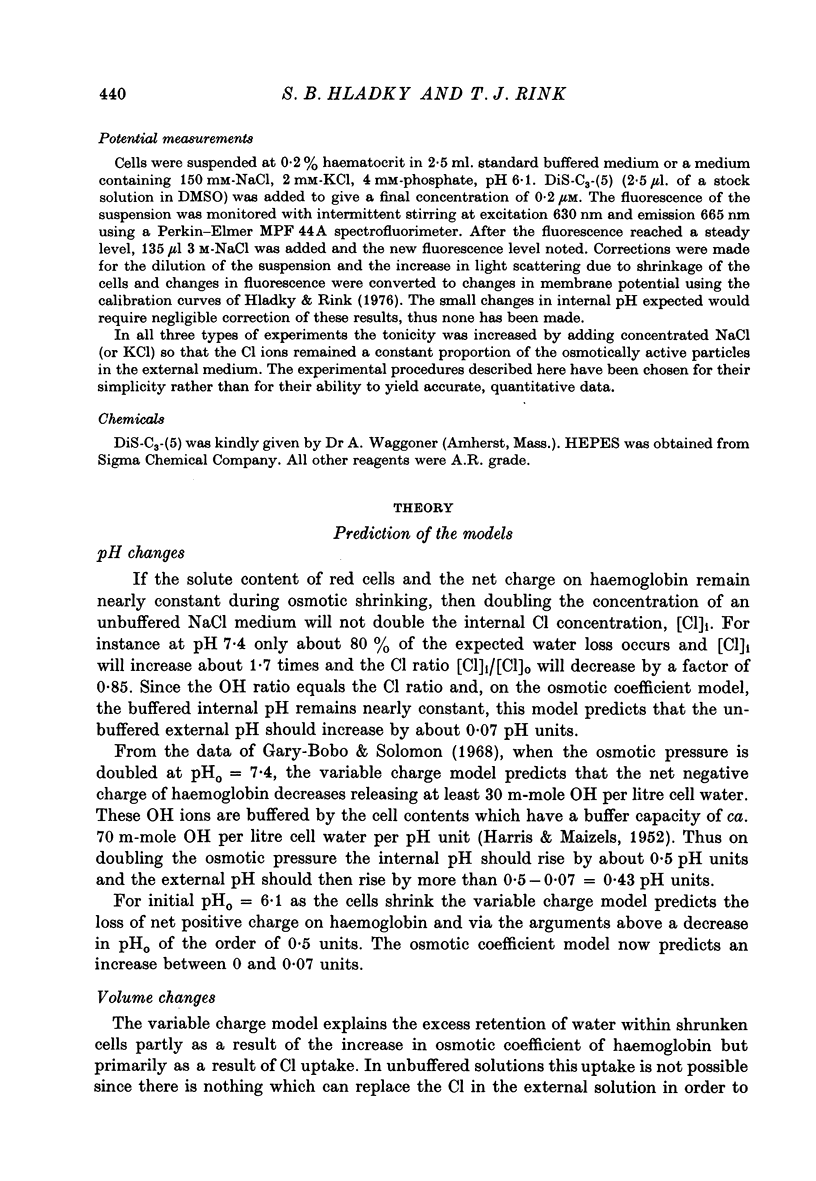
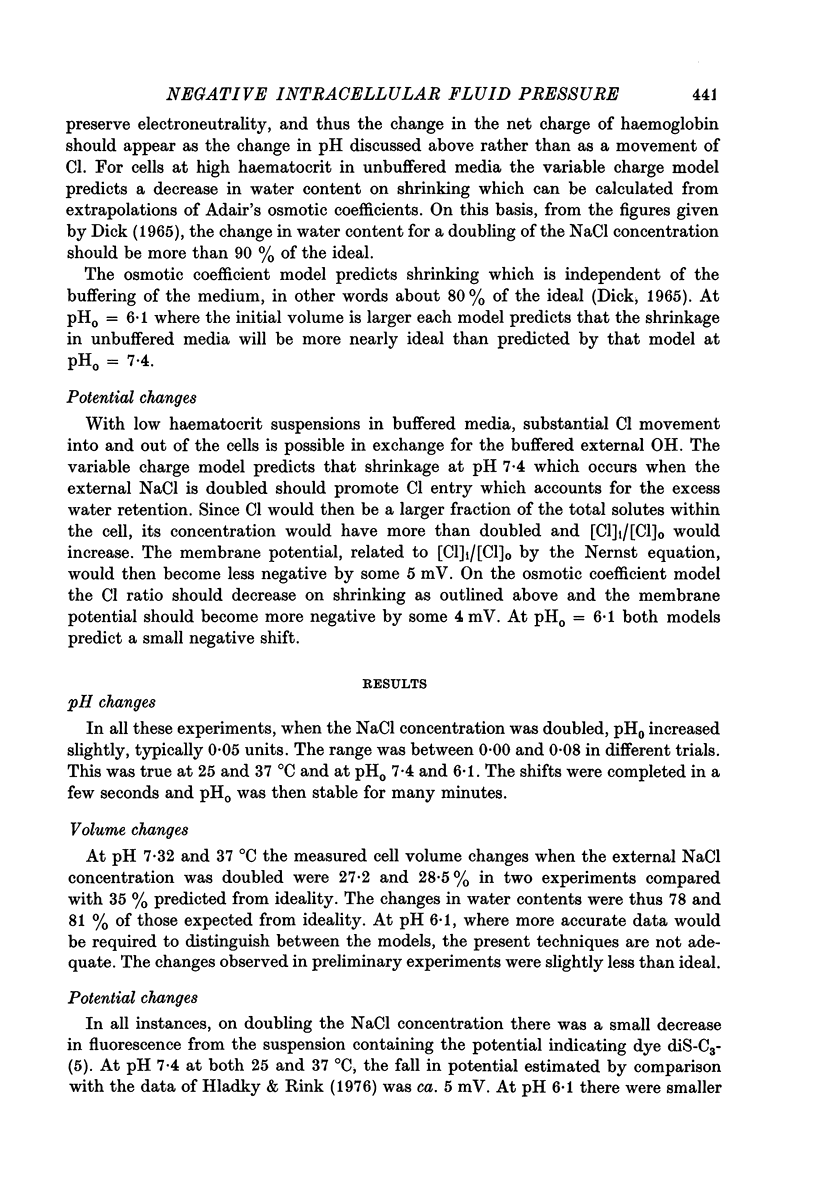
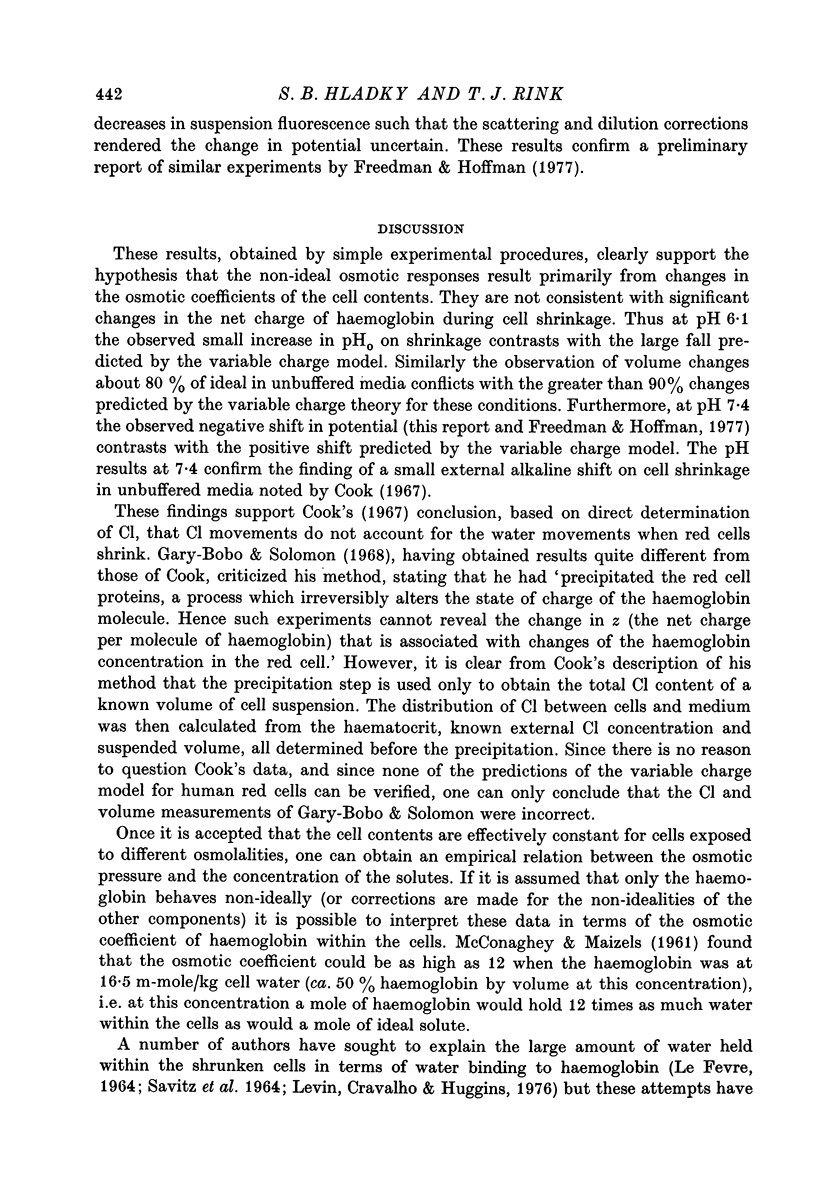
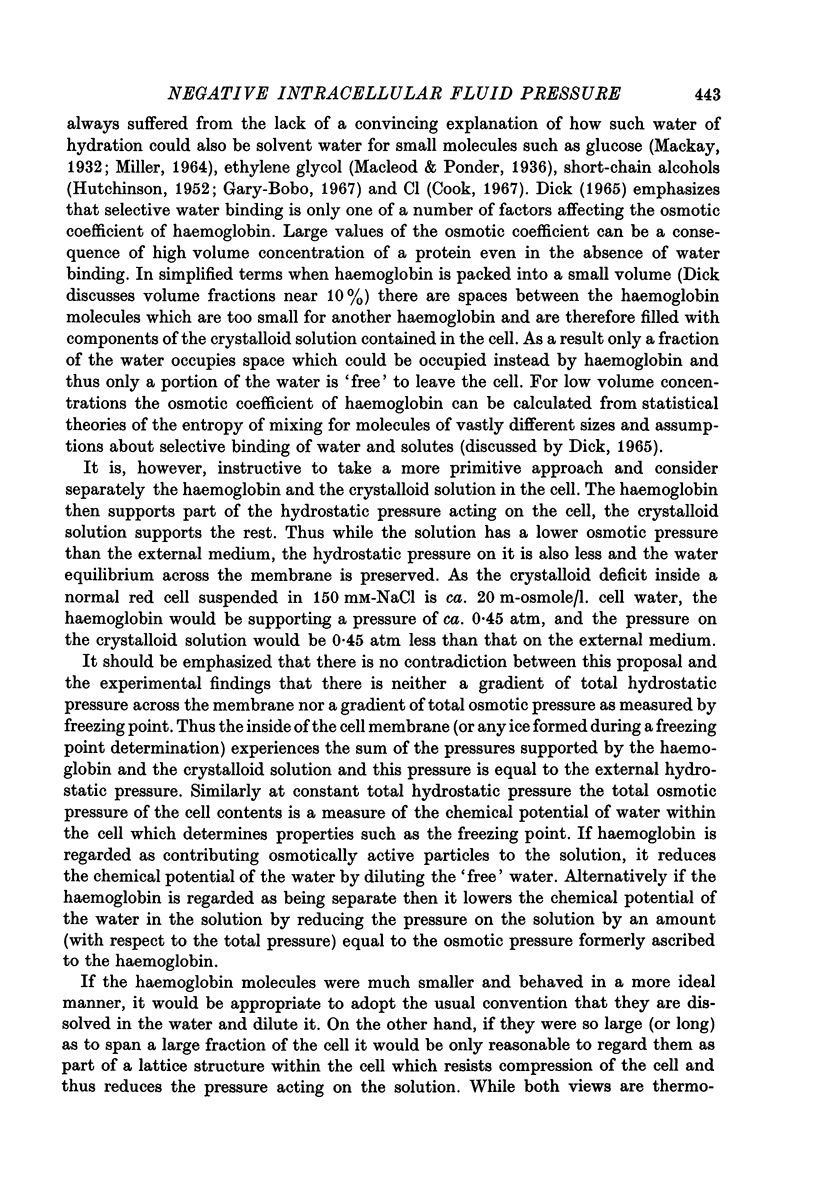
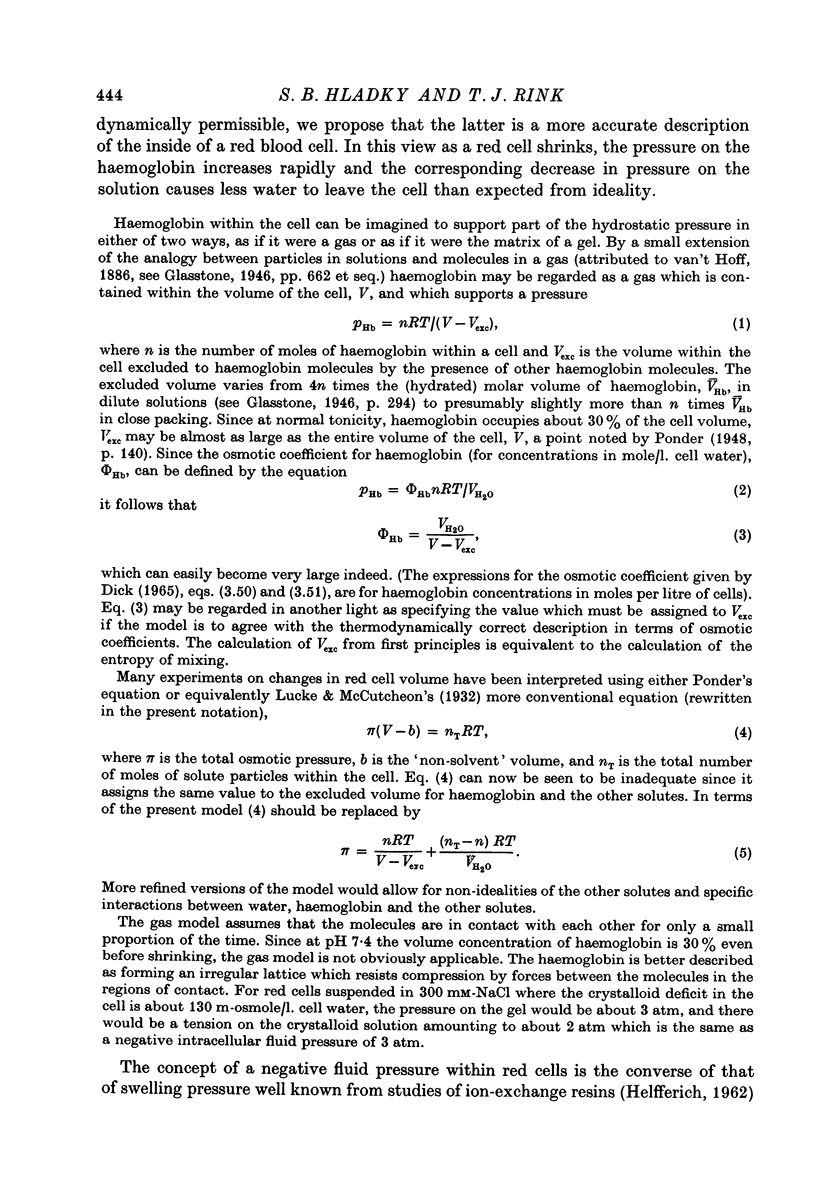

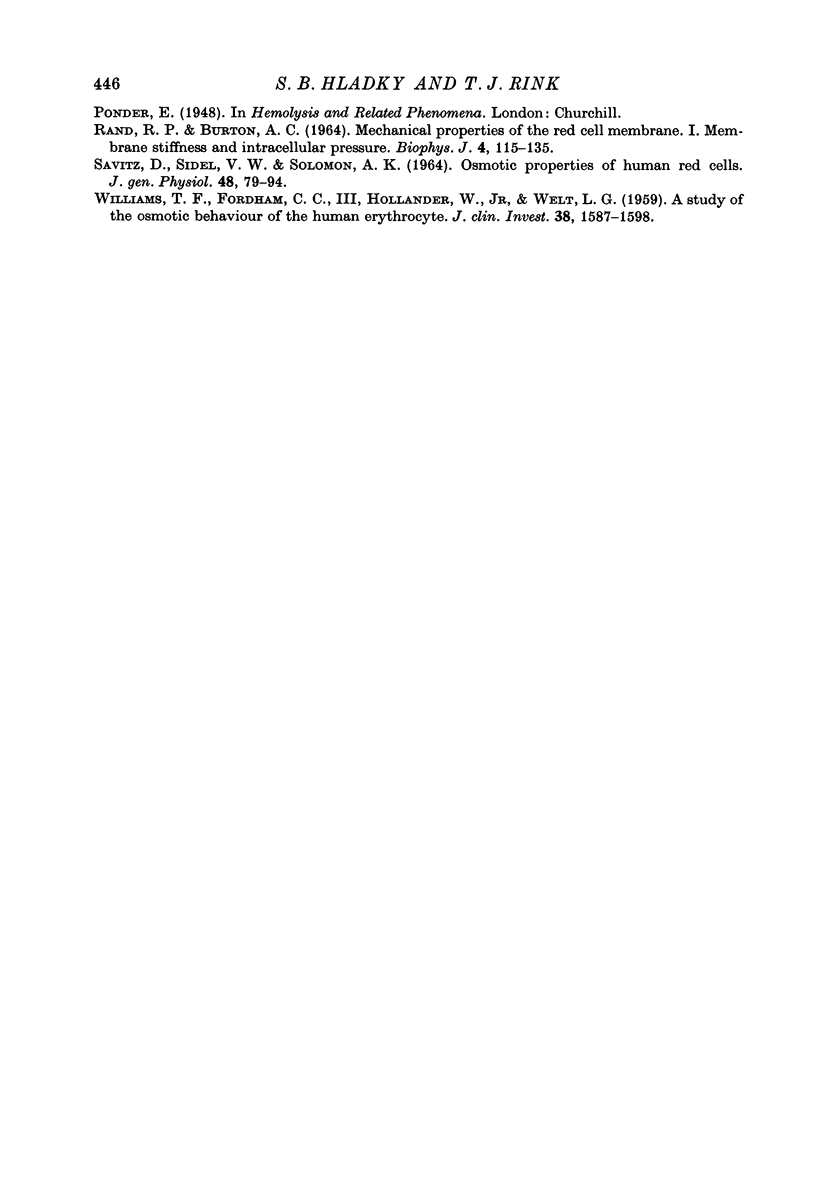
Selected References
These references are in PubMed. This may not be the complete list of references from this article.
- Bobo C. M. Nonsolvent water in human erythrocytes and hemoglobin solutions. J Gen Physiol. 1967 Dec;50(11):2547–2564. doi: 10.1085/jgp.50.11.2547. [DOI] [PMC free article] [PubMed] [Google Scholar]
- Cook J. S. Nonsolvent water in human erythrocytes. J Gen Physiol. 1967 May;50(5):1311–1325. doi: 10.1085/jgp.50.5.1311. [DOI] [PMC free article] [PubMed] [Google Scholar]
- DICK D. A., LOWENSTEIN L. M. Osmotic equilibria in human erythrocytes studied by immersion refractometry. Proc R Soc Lond B Biol Sci. 1958 Feb 18;148(931):241–256. doi: 10.1098/rspb.1958.0016. [DOI] [PubMed] [Google Scholar]
- Dalmark M. Chloride and water distribution in human red cells. J Physiol. 1975 Aug;250(1):65–84. doi: 10.1113/jphysiol.1975.sp011043. [DOI] [PMC free article] [PubMed] [Google Scholar]
- Gary-Bobo C. M., Solomon A. K. Hemoglobin charge dependence on hemoglobin concentration in vitro. J Gen Physiol. 1971 Mar;57(3):283–289. doi: 10.1085/jgp.57.3.283. [DOI] [PMC free article] [PubMed] [Google Scholar]
- Gary-Bobo C. M., Solomon A. K. Properties of hemoglobin solutions in red cells. J Gen Physiol. 1968 Nov;52(5):825–853. doi: 10.1085/jgp.52.5.825. [DOI] [PMC free article] [PubMed] [Google Scholar]
- Guyton A. C., Granger H. J., Taylor A. E. Interstitial fluid pressure. Physiol Rev. 1971 Jul;51(3):527–563. doi: 10.1152/physrev.1971.51.3.527. [DOI] [PubMed] [Google Scholar]
- HARRIS E. J., MAIZELS M. Distribution of ions in suspensions of human erythrocytes. J Physiol. 1952 Sep;118(1):40–53. doi: 10.1113/jphysiol.1952.sp004771. [DOI] [PMC free article] [PubMed] [Google Scholar]
- HUTCHINSON E. The behavior of human erythrocytes in aqueous alcohol solutions. Arch Biochem Biophys. 1952 Jul;38:35–41. doi: 10.1016/0003-9861(52)90006-4. [DOI] [PubMed] [Google Scholar]
- Hladky S. B., Rink T. J. Potential difference and the distribution of ions across the human red blood cell membrane; a study of the mechanism by which the fluorescent cation, diS-C3-(5) reports membrane potential. J Physiol. 1976 Dec;263(2):287–319. doi: 10.1113/jphysiol.1976.sp011632. [DOI] [PMC free article] [PubMed] [Google Scholar]
- Jacobs M. H., Stewart D. R. THE ROLE OF CARBONIC ANHYDRASE IN CERTAIN IONIC EXCHANGES INVOLVING THE ERYTHROCYTE. J Gen Physiol. 1942 Mar 20;25(4):539–552. doi: 10.1085/jgp.25.4.539. [DOI] [PMC free article] [PubMed] [Google Scholar]
- LEFEVRE P. G. THE OSMOTICALLY FUNCTIONAL WATER CONTENT OF THE HUMAN ERYTHROCYTE. J Gen Physiol. 1964 Jan;47:585–603. doi: 10.1085/jgp.47.3.585. [DOI] [PMC free article] [PubMed] [Google Scholar]
- Levin R. L., Cravalho E. G., Huggins C. E. Effect of hydration on the water content of human erythrocytes. Biophys J. 1976 Dec;16(12):1411–1426. doi: 10.1016/S0006-3495(76)85784-0. [DOI] [PMC free article] [PubMed] [Google Scholar]
- MCCONAGHEY P. D., MAIZELS M. The osmotic coefficients of haemoglobin in red cells under varying conditions. J Physiol. 1961 Jan;155:28–45. doi: 10.1113/jphysiol.1961.sp006611. [DOI] [PMC free article] [PubMed] [Google Scholar]
- MILLER D. M. SUGAR UPTAKE AS A FUNCTION OF CELL VOLUME IN HUMAN ERYTHROCYTES. J Physiol. 1964 Jan;170:219–225. doi: 10.1113/jphysiol.1964.sp007325. [DOI] [PMC free article] [PubMed] [Google Scholar]
- Macleod J., Ponder E. Solvent water in the mammalian erythrocyte. J Physiol. 1936 Feb 8;86(2):147–152. doi: 10.1113/jphysiol.1936.sp003349. [DOI] [PMC free article] [PubMed] [Google Scholar]
- RAND R. P., BURTON A. C. MECHANICAL PROPERTIES OF THE RED CELL MEMBRANE. I. MEMBRANE STIFFNESS AND INTRACELLULAR PRESSURE. Biophys J. 1964 Mar;4:115–135. doi: 10.1016/s0006-3495(64)86773-4. [DOI] [PMC free article] [PubMed] [Google Scholar]
- SAVITZ D., SIDEL V. W., SOLOMON A. K. OSMOTIC PROPERTIES OF HUMAN RED CELLS. J Gen Physiol. 1964 Sep;48:79–94. doi: 10.1085/jgp.48.1.79. [DOI] [PMC free article] [PubMed] [Google Scholar]
- WILLIAMS T. F., FORDHAM C. C., 3rd, HOLLANDER W., Jr, WELT L. G. A study of the osmotic behavior of the human erythrocyte. J Clin Invest. 1959 Sep;38:1587–1598. doi: 10.1172/JCI103937. [DOI] [PMC free article] [PubMed] [Google Scholar]


